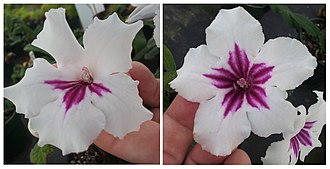– Actinomorphic flowers:
– Most flowers are actinomorphic, meaning they can be divided into 3 or more identical sectors related by rotation.
– Actinomorphic flowers like lilies and buttercups are radially symmetrical.
– Oleander is an example of a flower without mirror planes.
– Actinomorphic flowers can be divided into symmetrical halves by longitudinal planes.
– Actinomorphic flowers are also known as regular flowers.
– Zygomorphic flowers:
– Zygomorphic flowers can be divided into mirror-image halves by a single plane.
– Orchids and Lamiales flowers are examples of zygomorphic flowers.
– Zygomorphic flowers allow for specific pollen deposition on pollinating insects.
– Plants with zygomorphic flowers have fewer visitor species compared to actinomorphic flowers.
– Zygomorphic flowers have a greater risk of extinction due to pollinator decline.
– Asymmetry in flowers:
– Some plant species have flowers with no symmetry, resulting in handedness.
– Examples of plants with asymmetrical flowers are Valeriana officinalis and Canna indica.
– Differences between actinomorphic and zygomorphic flowers:
– Actinomorphic flowers are a basal angiosperm character, while zygomorphic flowers are a derived character.
– Some seemingly actinomorphic flowers like daisies are clusters of tiny flowers.
– Zygomorphic flowers have evolved multiple times independently.
– Imperfections in petals can lead to imperfect symmetry in both monocots and eudicots.
– Peloria is an aberration where zygomorphic flowers produce actinomorphic flowers.
– Peloria in flowers:
– Peloria is an aberration where zygomorphic flowers produce actinomorphic flowers.
– Peloria can be developmental or genetic, controlled by the CYCLOIDEA gene.
– Peloric flowers are larger and showier than zygomorphic flowers in some species.
– Charles Darwin studied peloria in Antirrhinum while researching floral characteristics.
– Even in monocots and eudicots, flower symmetries are rarely perfect due to imperfections in petals.
Floral symmetry describes whether, and how, a flower, in particular its perianth, can be divided into two or more identical or mirror-image parts.

Uncommonly, flowers may have no axis of symmetry at all, typically because their parts are spirally arranged.
